
Let’s face it. Sometimes, our cars let us down in ways we never expected. You invest tens of thousands of dollars, or commit to a multi-year car loan, only to find yourself developing a serious case of buyer’s remorse. It’s a feeling many of us know all too well, and unfortunately, it happens far more often than it should.
Considering the hefty price tags on both new and used cars these days, it’s absolutely crucial to know exactly what you’re getting into. Making a purchasing decision based solely on dazzling exterior aesthetics or impressive-looking specs can lead you straight into a world of unexpected trouble. That’s why learning from the lived experiences and outright mistakes of other vehicle owners is one of the smartest ways to make better, more informed choices for yourself.
In fact, buyer’s remorse is a remarkably common experience. A recent study by Lending Tree, which surveyed 1,919 car buyers, revealed that nearly four in 10 Americans (39%) regret their car purchase. Another report from Autotrader presented an even more startling statistic: a whopping 69% of car buyers experience buyer’s remorse. These numbers highlight a clear truth: many promising vehicles simply don’t live up to the hype, leaving their owners wishing they could hit the rewind button. We’re here to shine a light on some of those regrettable rides, starting with the first seven that drivers openly wish they had never purchased.
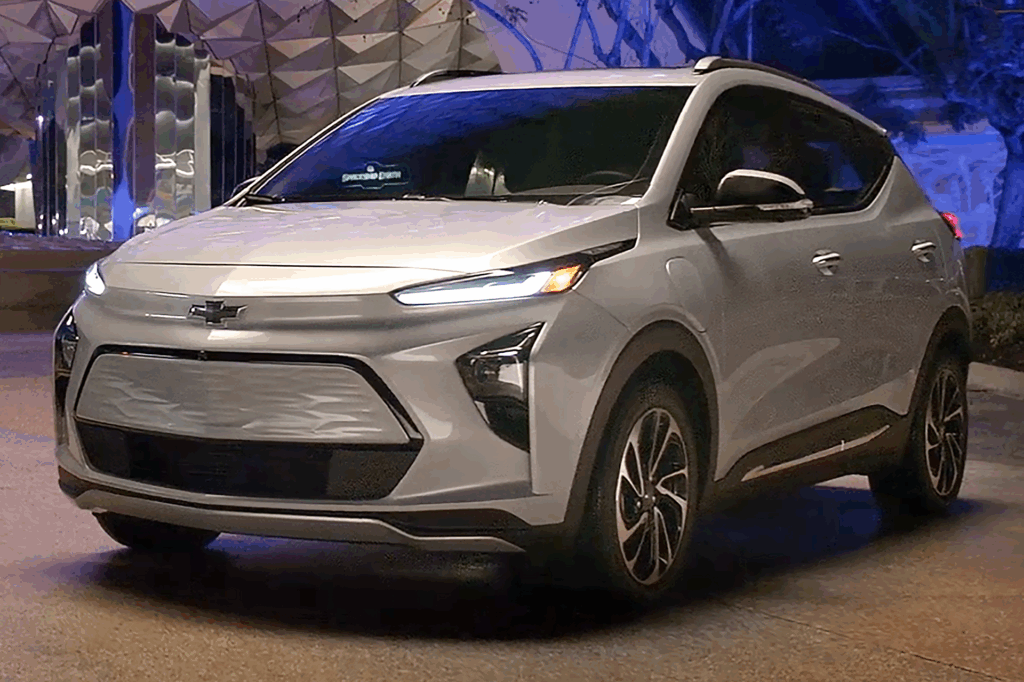
1. **Chevrolet Bolt**When the Chevrolet Bolt first rolled onto the scene, it garnered quite a bit of praise, particularly for its appealing affordability and a respectable range that made electric vehicle ownership feel within reach for many. It looked like a solid contender in the burgeoning EV market, promising a practical and budget-friendly entry into sustainable driving. Many initial buyers were genuinely excited about the prospect of owning a car that offered environmental benefits without breaking the bank.
However, the Bolt’s journey has been far from smooth, plagued by a series of problems that quickly overshadowed its initial advantages. The most infamous and alarming issue to hit the Bolt was undoubtedly its battery-related fires. These serious safety concerns led to massive, widespread recalls in both 2020 and 2021, sending shockwaves through the owner community and the wider automotive industry.
The root of this critical problem lay in the lithium-ion batteries themselves, which were manufactured by LG. These batteries were found to be susceptible to short-circuiting, a dangerous flaw that could cause them to overheat and, in the worst-case scenarios, ignite into flames. This not only created a significant safety hazard but also severely eroded owner confidence, transforming what was once seen as an affordable EV solution into a source of considerable anxiety.
Beyond these critical battery woes, owners also reported other areas where the Bolt fell short of expectations. The vehicle’s ride quality was often described as merely “so-so,” lacking the comfort or refinement one might hope for. Similarly, space for rear passengers was often deemed inadequate, making longer journeys less comfortable for those in the back. Even the handling, a key aspect of any driving experience, failed to truly impress, contributing to an overall sense of dissatisfaction that extended beyond the headline-grabbing battery issues.
Car Model Information: 2023 Chevrolet Bolt EUV FWD LT
Name: Chevrolet Bolt EV
Caption: 2022 Chevrolet Bolt EV
Manufacturer: General Motors
Production: unbulleted list
ModelYears: unbulleted list
Class: Subcompact car
BodyStyle: hatchback
Layout: Front-engine, front-wheel-drive layout
Predecessor: Chevrolet Spark EV
Categories: 2020s cars, All Wikipedia articles in need of updating, All articles containing potentially dated statements, All articles with unsourced statements, Articles containing potentially dated statements from February 2018
Summary: The Chevrolet Bolt EV (marketed in Europe as Opel Ampera-e) is a battery electric subcompact hatchback manufactured and marketed by General Motors under its Chevrolet brand from late 2016 until late 2023, with a brief hiatus between mid-2021 and early 2022.
The first-generation Bolt was developed and manufactured with LG Corporation. Sales of the 2017 Bolt began in California in December 2016; it was released nationwide and international markets release in 2017. A rebadged European variant was marketed as the Opel Ampera-e in mainland Europe. In 2017, the Bolt was the second-best-selling plug-in car in the United States. It was named the 2017 Motor Trend Car of the Year, the 2017 North American Car of the Year, an Automobile magazine 2017 All Star, and was listed in Time magazine’s Best 25 Inventions of 2016. The Ampera-e was discontinued after 2018. By the end of 2020, GM had sold 112,000 Bolt and Ampera-e cars worldwide. The first-generation Bolt had been subject to at least three recalls due to battery fire risks.
In mid-2023, GM officials said they would discontinue the Bolt; after outcry, they announced plans for a next-generation model, which is expected to be revealed in 2025 for model year 2026.
Get more information about: Chevrolet Bolt
Buying a high-performing used car >>>
Brand: Chevrolet Model: Bolt
Price: $16,866 Mileage: 78,044 mi.
Read more about: Buyer’s Remorse Hits Hard: 15 Cars Drivers Regretted Purchasing According to Latest Survey Findings
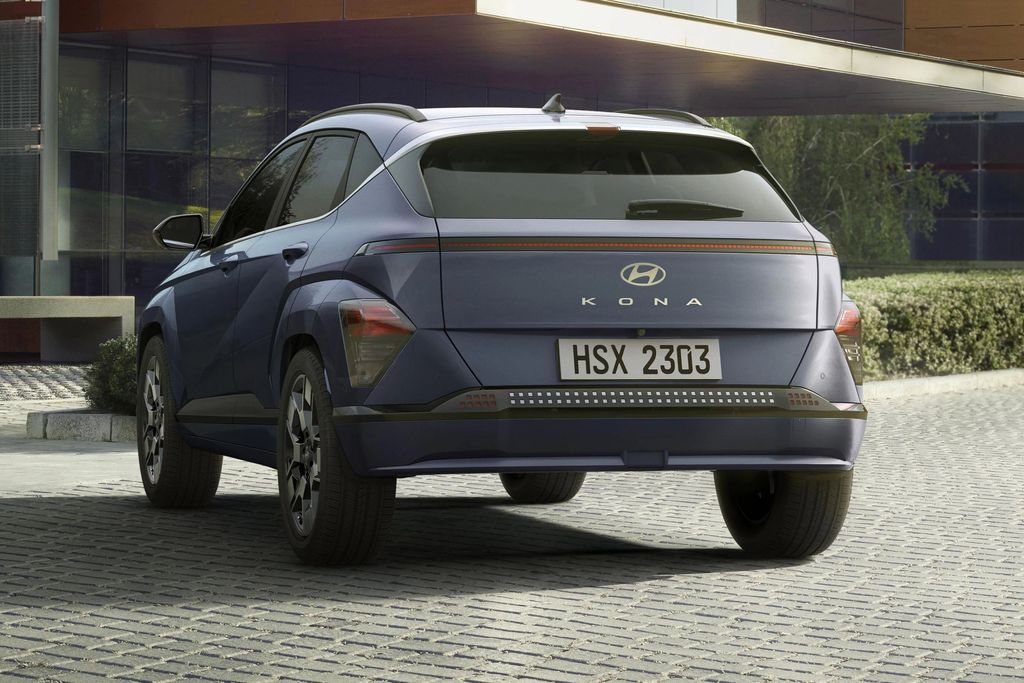
2. **Hyundai Kona Electric**Hyundai has certainly been on a hot streak in recent years, consistently rolling out a range of interesting and well-received electric vehicles that have impressed critics and consumers alike. Their innovative designs and competitive features have earned them a strong reputation in the rapidly expanding EV landscape. Yet, even the best manufacturers have their missteps, and for Hyundai, one such “clunker” that stands out is the Kona Electric.
Much like its Chevrolet counterpart, the Hyundai Kona Electric unfortunately shares a history marred by battery fires and subsequent recalls. This troubling pattern saw the carmaker issue worldwide recalls in both 2020 and 2021, a decisive move aimed at nipping these fire risks in the bud. The solution involved replacing battery packs in affected EVs, a costly and complex undertaking that underscored the severity of the underlying issue.
These battery-related problems were more than just a minor inconvenience; they represented a fundamental flaw that deeply impacted owner trust and the vehicle’s reputation. While the recalls addressed the immediate safety concerns, the psychological impact on owners was significant. It’s tough to feel confident in a car when its core power source has been identified as a fire risk, even if replacements are offered.
However, for many owners, the battery issues proved to be just the beginning – truly, the tip of the iceberg when it came to their dissatisfaction. While the context doesn’t detail every single problem beyond the battery, the implication is clear: the Kona Electric carried a host of other potential headaches that led to widespread buyer’s remorse. The sentiment among owners was a stark “Buyer beware!” warning, suggesting that despite Hyundai’s overall EV successes, this particular model was best approached with extreme caution, or perhaps, not at all.
Car Model Information: 2024 Alfa Romeo Giulia Ti
Name: Hyundai Kona
Caption: Hyundai Kona N Line (SX2)
Manufacturer: Hyundai Motor Company
Aka: Hyundai Kauai (Portugal)
Production: 2017–present
ModelYears: 2018–present
Class: Subcompact crossover SUV
BodyStyle: SUV
Layout: ubl
Categories: 2020s cars, All-wheel-drive vehicles, All Wikipedia articles in need of updating, Articles containing Chinese-language text, Articles containing Korean-language text
Summary: The Hyundai Kona (Korean: 현대 코나) is a subcompact crossover SUV produced by the South Korean manufacturer Hyundai. The first-generation Kona debuted in June 2017 and the production version was revealed later that year. It is positioned between the Venue or Bayon and the Tucson in Hyundai crossover SUV line-up. The battery electric version called the Kona Electric (or Kona EV) was first launched in South Korea during the first half of 2018 and rolled out gradually worldwide afterwards.
Get more information about: Hyundai Kona
Buying a high-performing used car >>>
Brand: Hyundai Model: Kona Electric
Price: $28,410 Mileage: 7,800 mi.
Read more about: Buyer’s Remorse Hits Hard: 15 Cars Drivers Regretted Purchasing According to Latest Survey Findings
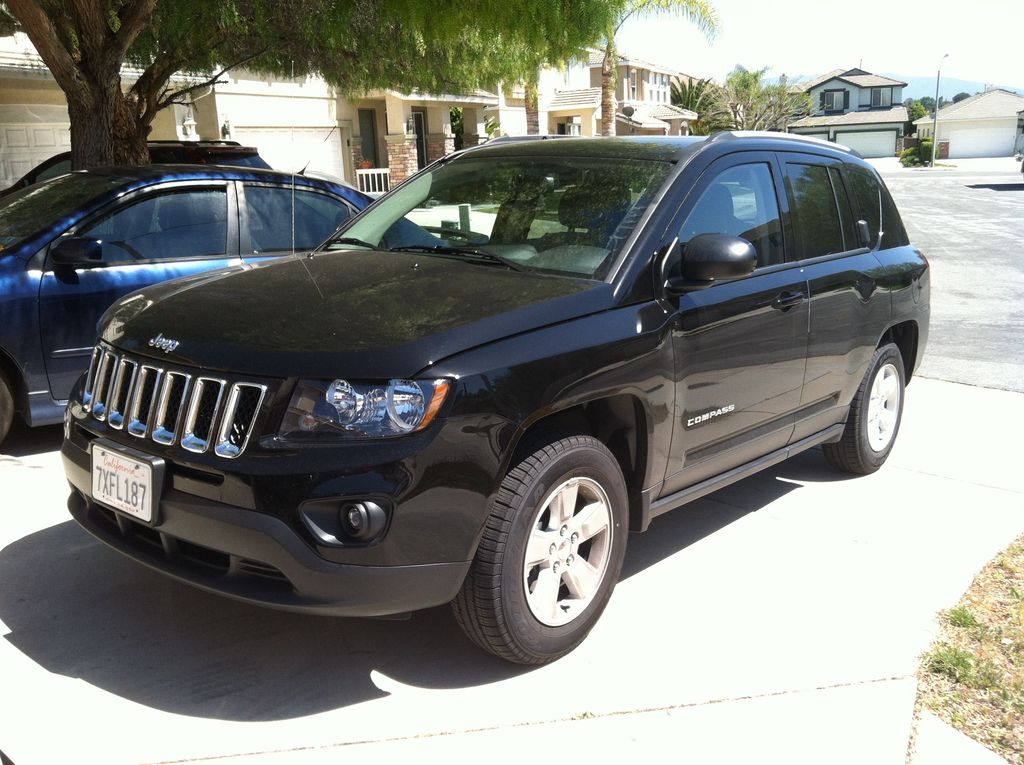
3. **Jeep Compass**As a compact SUV, the Jeep Compass might initially appeal to those seeking a versatile vehicle for urban adventures and light off-roading. However, numerous owners have discovered that this particular SUV comes with a baggage of “serious issues” across various model years. These problems are significant enough that many would advise steering well clear if you want to avoid a “migraine headache on wheels,” a vivid description of the frustrations it can cause.
One of the most frequently cited and deeply frustrating problems owners complain about revolves around the vehicle’s transmissions. Both the continuously variable transmission (CVT) and the 9-speed automatic transmissions have been sources of significant distress. Owners report experiencing herky-jerky shifting, which can make for an uncomfortable and unpredictable driving experience, completely undermining the smooth ride expected from a modern SUV.
More alarmingly, these transmissions are also prone to catastrophic failure. Imagine the nightmare of your transmission giving out, leaving you stranded and facing potentially massive repair bills for a component that should be reliable. This kind of major mechanical breakdown isn’t just an inconvenience; it’s a profound financial burden and a source of immense stress, fundamentally eroding any faith in the vehicle’s long-term dependability.
Beyond the critical transmission issues, the Jeep Compass has also been associated with other significant performance and reliability concerns. Owners have reported poor engine performance, which translates to a less responsive and enjoyable drive, and at times, a struggle to keep up with traffic. Additionally, problems like excessive oil consumption and various electrical system issues frequently surface, adding to the growing list of reasons why many owners deeply regret their decision to bring a Jeep Compass into their lives.
Car Model Information: 2018 Jeep Compass Latitude
Name: Jeep Compass
Caption: 2019 Jeep Compass
Manufacturer: Jeep
Production: 2006–present
ModelYears: 2007–present
Class: Compact crossover SUV
BodyStyle: SUV
Layout: Front-engine, front-wheel-drive layout
Chassis: Unibody
Categories: 2010s cars, 2020s cars, All-wheel-drive vehicles, All Wikipedia articles written in American English, Articles with short description
Summary: The Jeep Compass is a compact crossover SUV, introduced in 2006 for the 2007 model year. The first generation Compass and Patriot, its rebadged variant, were among Jeep’s first crossover SUVs. The second-generation Compass debuted in September 2016 in Brazil and at the Los Angeles International Auto Show in November 2016, sharing a modified platform with the Renegade. It is positioned between the smaller Renegade and the larger Cherokee globally or the Commander in South America. The third-generation Compass debuted in May 2025, built on the STLA Medium by Stellantis, shared with other PSA Groupe vehicles.
Get more information about: Jeep Compass
Buying a high-performing used car >>>
Brand: Jeep Model: Compass
Price: $13,393 Mileage: 78,869 mi.
Read more about: Buyer Beware: These 10 Popular Cars Are Known Money Pits After 100,000 Miles, According to Automotive Experts

4. **Dodge Dart**The Dodge Dart, a compact sedan, presented itself as an economical and stylish option in its category. Yet, for many who took the plunge and bought one, it quickly revealed itself to be a vehicle riddled with what can only be described as “full-size car problems.” This stark contrast between its compact footprint and its sprawling list of mechanical and reliability issues has left a significant trail of disgruntled owners in its wake.
Where does one even begin to catalogue the frustrations associated with the Dodge Dart? Owners point to a wide array of problematic components that collectively contribute to its poor reputation. From the fundamental mechanics of the transmission and the engine, to the crucial systems of the suspension and the brakes, nearly every major part of the vehicle seems to have been a source of complaints. This widespread unreliability transforms daily driving into a constant source of anxiety, rather than the smooth experience one hopes for.
These issues are not just anecdotal; the numbers speak for themselves. According to data compiled by Consumer Reports, a staggering “around six in 10 buyers say they are not satisfied with the vehicle.” This statistic is a powerful indictment, illustrating that the majority of Dart owners, far from enjoying their purchase, are instead burdened with deep regret. Such a high level of dissatisfaction is a clear indicator that the Dart consistently failed to meet even basic expectations for reliability and performance.
Indeed, the Dodge Dart has become a cautionary tale in the automotive world, representing a vehicle that many owners wish they had simply never bought. Its catalogue of failures across critical systems, coupled with a resounding chorus of buyer dissatisfaction, makes it a prime example of why thorough research and learning from others’ experiences is absolutely essential before committing to a new ride. It’s a vivid reminder that sometimes, the seemingly compact problems can feel overwhelmingly large.
Car Model Information: 1972 Dodge Dart Swinger
Name: Dodge Dart
Caption: 1966 Dodge Dart GT 2-door hardtop
Manufacturer: Dodge
Production: 1959–1976 (US market)
1969-1981 (Brazil)
AlternativeName: Charger (Brazil)
ModelYears: 1960–1976 (US market)
1970-1981 (Brazil)
Class: Full-size
Layout: FR layout
Predecessor: Dodge Coronet#Fourth generation (1957–1959)
Related: Plymouth Valiant,Chrysler Valiant,Dodge Phoenix
Successor: Dodge Aspen,Dodge Diplomat,Talbot Tagora
Categories: 1970s cars, All articles with unsourced statements, Articles with short description, Articles with unsourced statements from December 2023, Articles with unsourced statements from May 2025
Summary: The Dodge Dart is a line of passenger cars produced by Dodge from the 1959 to 1976 model years in North America, with production extended to later years in various other markets.
The production Dodge Dart was introduced as a lower-priced full-size model in 1960 and 1961, but became a mid-size car for one model year for 1962, and was then reduced to a compact for two generations, from 1963 to 1976.
Chrysler had first used ‘Dart’ name plates on two Italian styled show cars, in 1956 and 1957, before it became a Dodge model name. The Dart nameplate was resurrected for a Fiat-derived compact car that was introduced in 2012.
Get more information about: Dodge Dart
Buying a high-performing used car >>>
Brand: Dodge Model: Dart
Price: $18,900 Mileage: 40,424 mi.
Read more about: 12 Classic Boomer Cars Millennials Avoid: The Hidden Factors Behind Younger Generations’ Disinterest

5. **Dodge Grand Caravan**For many families across generations, the Dodge Grand Caravan holds a unique place in their collective memory. These minivans have served as the backdrop for countless road trips, school runs, and family vacations, creating a tapestry of experiences – some genuinely fond, and others, perhaps, not so much. While the Grand Caravan aimed to be the quintessential family, pet, and cargo hauler, the reality of its ownership for many was anything but a “smooth driving” experience.
It becomes incredibly difficult to rely on a vehicle for such crucial family duties when one of its most vital components, the transmission, is a common point of failure. Transmission failure is a frequent and deeply frustrating complaint voiced by a significant number of Grand Caravan owners. This isn’t just a minor glitch; it’s a major mechanical breakdown that can leave families stranded and facing expensive repairs, completely undermining the vehicle’s core purpose of reliable transportation.
Before these transmissions ultimately go “kaput,” giving up entirely, owners often endure a series of tell-tale issues that make driving increasingly difficult and unpredictable. Common symptoms include delayed gear engagement, where the vehicle hesitates awkwardly when shifting, and rough shifting, which translates into a jarring and uncomfortable ride. Additionally, slipping gears are a frequent precursor, indicating a transmission that is struggling to perform its basic function, leaving drivers constantly on edge.
Compounding these significant transmission woes, many owners also report persistent problems with the electrical system. These issues can range from minor annoyances to serious malfunctions, further diminishing the vehicle’s reliability and the owner’s peace of mind. Heavy oil consumption is another recurring complaint, adding to the maintenance burden and cost of ownership. The collective sentiment among these owners is clear: if they could “rewind time and have a do-over,” they would enthusiastically choose something else entirely, highlighting the depth of their regret.
Car Model Information: 2020 Volvo XC90 T6 Momentum 7 Passenger
Caption: 2011 Dodge Grand Caravan Mainstreet
Name: Dodge Grand Caravan
Manufacturer: Chrysler Corporation,Daimler AG,Chrysler LLC,Chrysler Group LLC,FCA US LLC
Class: Minivan
Layout: FF layout,F4 layout
Production: November 2, 1983 –August 21, 2020
ModelYears: 1984–2020
Related: Plymouth Voyager,Chrysler Town & Country (minivan),Dodge Mini Ram,Chrysler Voyager,Volkswagen Routan
Assembly: Windsor, Ontario,Fenton, Missouri,Fenton, Missouri,Fuzhou
Successor: Dodge Journey,Chrysler Voyager
Categories: All-wheel-drive vehicles, All articles with unsourced statements, Articles with short description, Articles with unsourced statements from December 2017, Articles with unsourced statements from May 2009
Summary: The Dodge Caravan is a series of minivans manufactured by Chrysler from the 1984 through 2020 model years. The Dodge version of the Chrysler minivans, was marketed as both a passenger van and a cargo van (the only version of the model line offered in the latter configuration). For 1987, the model line was joined by the long-wheelbase Dodge Grand Caravan. Produced in five generations across 36 model years, the Dodge Caravan is the second longest-lived Dodge nameplate (exceeded only by the Dodge Charger). Initially marketed as the Dodge counterpart of the Plymouth Voyager, the Caravan was later slotted between the Voyager and the Chrysler Town & Country. Following the demise of Plymouth, the model line became the lowest-price Chrysler minivan, ultimately slotted below the Chrysler Pacifica.
Sold primarily in the United States and Canada, the Dodge Caravan was also marketed in Europe and other international markets under the Chrysler brand (as the Chrysler Voyager or Chrysler Caravan). From 2008 onward, Dodge marketed the model line only as the Grand Caravan; Ram Trucks sold a cargo-only version of the model line as the Ram C/V Tradesman. The model line was also rebranded as the Volkswagen Routan from 2009 through 2014.
After the 2020 model year, the Dodge Grand Caravan was discontinued, ending production on August 21, 2020. For 2021 production, the Grand Caravan nameplate was moved to Chrysler, which used it for a Canadian-market version of the Chrysler Pacifica (in the United States, the exact vehicle was marketed as the Chrysler Voyager).
For its entire production run, the Dodge Caravan/Grand Caravan was manufactured by Chrysler Canada (now Stellantis Canada) at its Windsor Assembly facility (Windsor, Ontario). From 1987 until 2007, the model line was also manufactured by Chrysler at its Saint Louis Assembly facility (Fenton, Missouri). Since their introduction in late 1983, over 14.6 million Chrysler minivans have been sold worldwide (including export versions and versions sold through rebranding).
Get more information about: Dodge Caravan
Buying a high-performing used car >>>
Brand: Dodge Model: Grand Caravan
Price: $26,495 Mileage: 65,499 mi.
Read more about: Buyer Beware: 15 Popular Cars That Seriously Disappointed Owners, According to Driver Regrets and Reliability Data
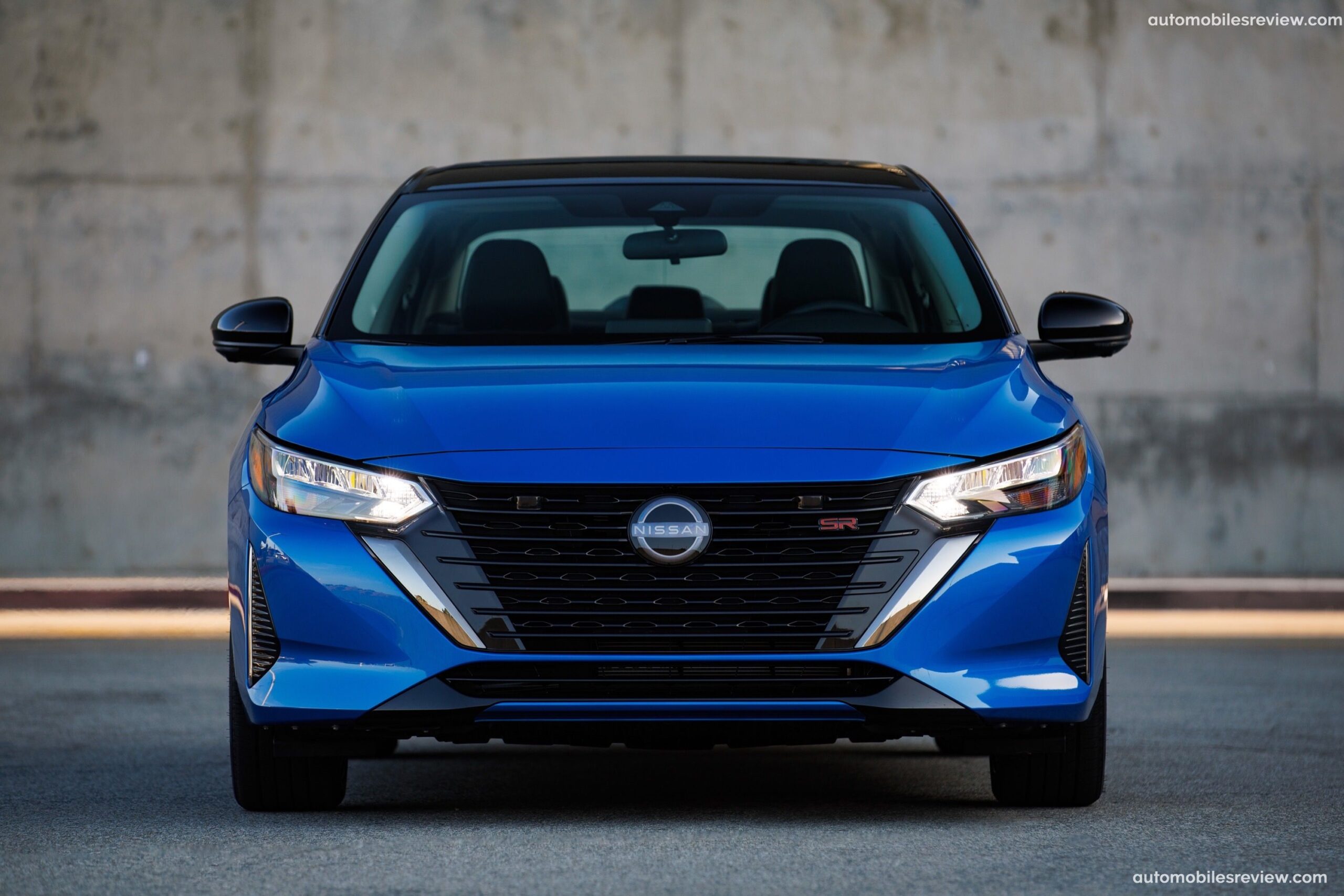
6. **Nissan Sentra**The Nissan Sentra has a long history, and like most vehicle models, some years stand out as good, offering reliable and economical transportation. However, within its lineage, there are specific model years that have earned a reputation for being, quite frankly, “horrific.” If you’re in the market for a used car, the strong advice from many disillusioned owners is to actively “stay away from the ones made from 2013 to 2019.” This period represents a particularly thorny chapter in the Sentra’s story, largely due to one infamous component.
The notorious continuously variable transmission, or CVT, has been a persistent thorn in the side of countless Sentra owners from these problematic model years. While CVTs are designed for smooth, efficient power delivery, Nissan’s implementation during this era frequently fell short of expectations, and often, of basic reliability. The result was a driving experience plagued with frustration and mechanical concern, turning what should be a straightforward commute into a potential headache.
Owners of these Sentra models commonly reported a laundry list of CVT-related problems. These issues included the transmission overheating, a critical flaw that could lead to significant damage and even total failure. Other complaints detailed jerky acceleration, where the car would lurch rather than smoothly pick up speed, and shuddering, an uncomfortable vibration that signaled deep-seated transmission distress. Beyond the CVT, engine stalling was another worrying issue that left drivers vulnerable and frustrated, adding to the vehicle’s unreliability.
Adding to the vehicle’s troubled history, there have also been numerous recalls related to various critical safety components. These included the vehicle’s airbags, which are paramount for occupant safety, seatbelts, another non-negotiable safety feature, and the brakes, which are fundamental to control and accident prevention. This extensive list of recalls, combined with the prevalent transmission and engine issues, solidifies the 2013-2019 Nissan Sentra as a model year range that many owners would unequivocally advise against.
Car Model Information: 2010 Nissan Sentra 2.0
Name: Nissan Sentra
Caption: 2021 Nissan Sentra SR (B18; Canada)
Manufacturer: Nissan
Aka: Nissan Sunny
Production: 1982–present
Class: Subcompact car
Predecessor: Nissan Sunny#B310
Categories: 1990s cars, 2000s cars, 2010s cars, 2020s cars, All Wikipedia articles written in American English
Summary: The Nissan Sentra is a series of automobiles manufactured by the Japanese automaker Nissan since 1982. Since 1999, the Sentra has been categorized as a compact car, while previously it occupied the subcompact class. Until 2006, Sentra was a rebadged export version of the Japanese Nissan Sunny, but since the 2013 model year, Sentra is a rebadged export version of the Sylphy. The Sentra nameplate is not used in Japan. Many other countries in Latin America sell their versions of the Sunny as the Sentra. In Mexico, the first three generations of the Sentra were known as the Nissan Tsuru (Japanese for crane), and the B13 model was sold under that name until 2017, alongside the updated models badged as Sentra.
In North America, the Sentra currently serves as Nissan’s compact car, despite being rated as a mid-size car by the EPA due to its interior volume since the 2007 model year. While previous Sentras were subcompacts, the Sentra has grown over the years, with the Nissan Versa having replaced the Sentra in the entry-level area.
The Sentra name was created for Nissan by Ira Bachrach of NameLab, and Bachrach describes the origin as “Nissan wanted consumers to understand that it was quite safe even though it was small. The word Sentra sounds like central as well as sentry, which evokes images of safety.”
Get more information about: Nissan Sentra
Buying a high-performing used car >>>
Brand: Nissan Model: Sentra
Price: $7,228 Mileage: 89,998 mi.
Read more about: Buyer Beware: These 10 Popular Cars Are Known Money Pits After 100,000 Miles, According to Automotive Experts
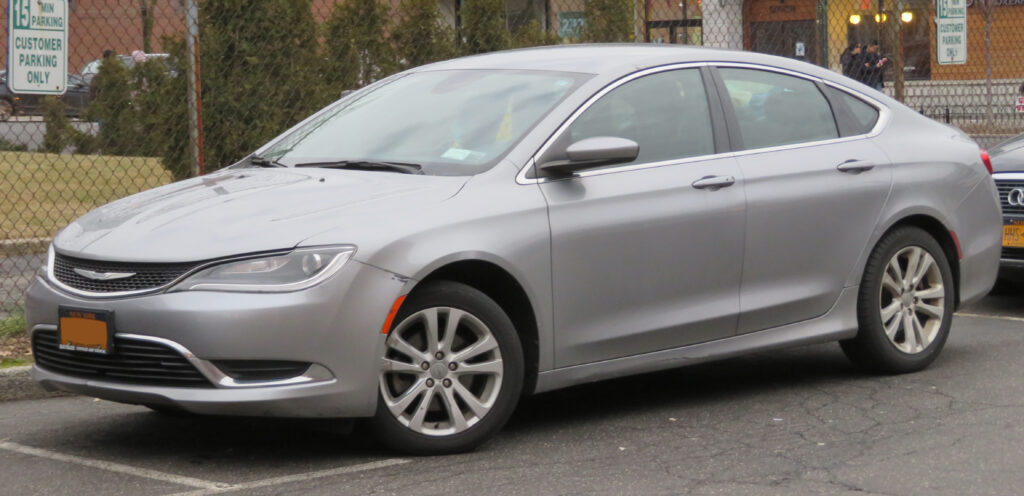
7. **Chrysler 200**The Chrysler 200, a sedan manufactured between 2011 and 2017, was intended to be a competitive offering in the mid-size segment. However, for many of its owners, the reality of living with the car quickly revealed a multitude of significant reliability issues. These problems spanned various aspects of the vehicle’s performance and engineering, collectively contributing to a widespread sense of buyer’s remorse among those who chose it.
One of the most problematic components, consistently highlighted by owners, was the 9-speed automatic transmission. This particular transmission proved to be especially troublesome in the 2015, 2016, and 2017 model years. Drivers frequently encountered frustrating performance quirks and, more critically, experienced outright transmission failure. What was supposed to be a sophisticated drivetrain often turned into a source of constant worry and unexpected repair bills, making the daily commute far more stressful than it should have been.
For many owners, these transmission headaches were just the beginning of their Chrysler 200 saga. The sheer prevalence of issues related to this critical component meant that for some, the car felt like a ticking time bomb from day one. The initial promise of a modern, efficient transmission quickly gave way to the harsh reality of costly repairs and a diminished driving experience, highlighting a significant engineering misstep that impacted many.
Beyond the pervasive transmission issues, the Chrysler 200 also suffered from recurring engine performance problems. These could manifest in various ways, from a lack of power and responsiveness to more severe operational inconsistencies. Such engine troubles further compounded the vehicle’s reputation for unreliability, sealing its fate as a car many owners regret purchasing. The combination of transmission and engine woes created a perfect storm of disappointment, ensuring the Chrysler 200 remained etched in owners’ minds as a purchase they wish they could undo.
Alright, so we’ve already taken a deep dive into some of the vehicles that have left owners wishing they could hit the rewind button. But buckle up, because our journey through the land of automotive regrets isn’t over yet! We’re rolling into the next batch of cars that drivers swear they’d never buy again, and then we’ll equip you with some seriously smart strategies to avoid that dreaded buyer’s remorse yourself.
These aren’t just random complaints; they’re patterns of frustration, mechanical mishaps, and design choices that simply didn’t live up to expectations. Whether it’s a quirky transmission, a thirsty engine, or a battery that just won’t behave, these cars have a story to tell – and it’s a story of disappointment that many wish they’d heard before signing on the dotted line. Let’s get into the next round of vehicles that had owners saying, ‘Nope, never again!’
Car Model Information: 2015 Chrysler 200 S
Name: Chrysler 200
Manufacturer: Chrysler
Production: 2010–2016
ModelYears: 2011–2017
Assembly: Sterling Heights, Michigan
Class: Mid-size car
Sp: us
Predecessor: Chrysler Sebring
Categories: 2010s cars, All articles with dead external links, All articles with unsourced statements, Articles with dead external links from July 2020, Articles with permanently dead external links
Summary: The Chrysler 200 is a mid-size sedan that was manufactured and marketed by Chrysler from model years 2011 to 2017 across two generations in four-door sedan and two-door convertible (first generation only) body styles.
The 200 nameplate debuted on the 200C, a prototype hybrid vehicle shown at the 2009 North American International Auto Show in Detroit and based on the Chrysler 300. The 200C concept was engineered to accept either traditional gasoline, hybrid or full-electric powertrains.
Get more information about: Chrysler 200
Buying a high-performing used car >>>
Brand: Chrysler Model: 200
Price: $7,200 Mileage: 122,275 mi.
Read more about: 12 Classic Boomer Cars Millennials Avoid: The Hidden Factors Behind Younger Generations’ Disinterest
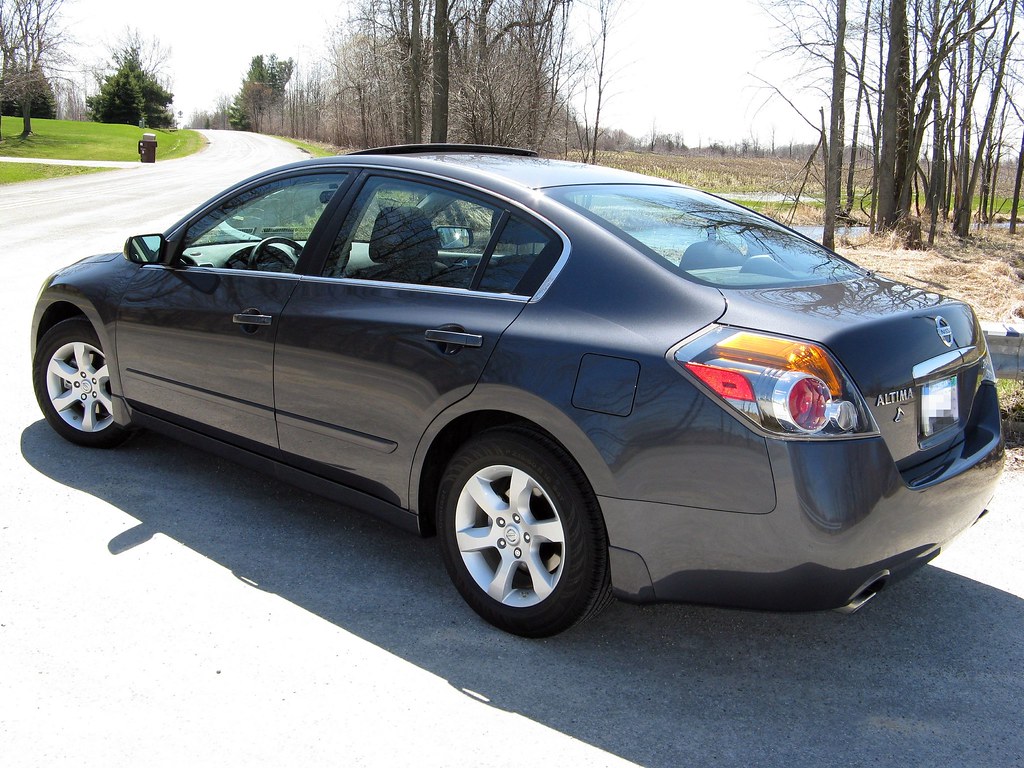
8. **Nissan Altima**Ah, the Nissan Altima. For many years, it was a go-to for folks looking for a reliable, sensible sedan. But, like a plot twist in your favorite show, some model years have truly let owners down, sparking serious buyer’s remorse. And if you’ve been following our list, you might already guess one of the prime culprits here.
Yep, you guessed it: the continuously variable transmission (CVT) is back to haunt us. The Altima’s CVT has been a problematic component for many owners, with its worst issues raising their ugly heads in the 2013 to 2019 model years. This isn’t just a minor annoyance; we’re talking about a core component that can make or break the driving experience, turning smooth commutes into jerky, frustrating rides.
Beyond the well-documented transmission woes, Altima owners have also reported a range of other nagging problems. Issues with the steering, for instance, can quickly erode confidence on the road, making the car feel less responsive and secure than it should. It’s not just about getting from point A to point B; it’s about how that journey feels, and for many, it simply wasn’t a pleasant one.
Adding to the list of grievances, excessive oil consumption and oil leaks frequently pop up in owner complaints. These aren’t just messy; they indicate deeper engine health issues that can lead to costly repairs and constant worries about your car’s longevity. For a vehicle that promises practicality, these ongoing mechanical headaches are a major buzzkill, making the Altima a car many wish they’d skipped.
Car Model Information: 2015 Nissan Altima 2.5 S
Name: Nissan Altima
Caption: 2023 Nissan Altima SR (L34; US)
Manufacturer: Nissan
Aka: Nissan Bluebird
Production: 1992–present
Class: Compact car
Predecessor: Nissan Bluebird,Nissan Stanza
ModelYears: 1993–present
Categories: 2000s cars, 2010s cars, 2020s cars, All-wheel-drive vehicles, All Wikipedia articles written in American English
Summary: The Nissan Altima is a mid-size car manufactured by Nissan since 1992. It is a continuation of the Nissan Bluebird line, which began in 1955.
The Altima has historically been larger, more powerful, and more luxurious than the Nissan Sentra but less so than the Nissan Maxima. The first through fourth-generation cars were manufactured exclusively in the United States and officially sold in North and South America, along with the Middle East and Australia. For other markets, Nissan sold a related mid-size sedan called the Nissan Teana which was between the Altima and Maxima in terms of size. In 2013, the Teana became a rebadged version of the fifth-generation Altima.
The name “Altima” was originally applied to a top trim line of the Nissan Leopard for the Japanese market in 1986, and then to the Nissan Laurel Altima mid-size car sold in Central America and the Caribbean before 1992. In 1992, Nissan discontinued the Stanza which was a Nissan Bluebird clone, replacing it with the US-built Altima, while remaining a compact car. The first Altima was produced in June 1992, as a 1993 model. All Altima models for the North American market were built in Smyrna, Tennessee, until June 2004, when Nissan’s Canton, Mississippi plant also began producing the model to meet high demand.
Get more information about: Nissan Altima
Buying a high-performing used car >>>
Brand: Nissan Model: Altima
Price: $8,235 Mileage: 117,517 mi.
Read more about: Remember These Rides? 12 Automotive Icons That Slipped From Cool to Cringe
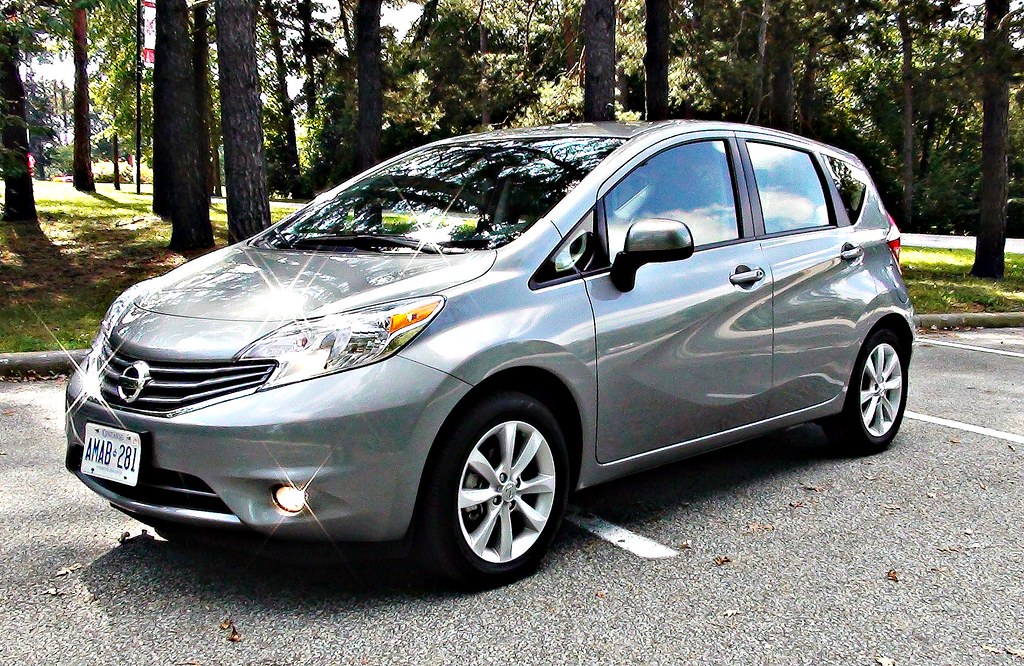
9. **Nissan Versa Note**The Nissan Versa Note tried to carve out a niche for itself as a super-cheap small hatchback, appealing to budget-conscious buyers looking for an economical ride. And while a low price point can be incredibly enticing, it often comes with a hidden cost: a significant compromise in quality that ultimately leads to regret. For many Versa Note owners, that bargain price quickly started to feel less like a steal and more like a sacrifice.
Unsurprisingly, the transmission often frustrated Nissan Versa Note owners to no end. Once again, it was the notorious CVT that proved to be a persistent source of complaints. Instead of delivering the smooth efficiency it promised, this transmission frequently brought about issues that undermined the entire driving experience, from unpredictable power delivery to outright mechanical concerns.
Beyond the transmission, another significant drawback that contributed to owner dissatisfaction was the anemic acceleration from its 1.6-liter 4-cylinder engine. In today’s traffic, a car that struggles to get up to speed or merge confidently can be more than just slow; it can be downright dangerous and incredibly frustrating. This lack of power, combined with the transmission issues, made the Versa Note feel less like a zippy hatchback and more like a perpetually sluggish compromise.
So, while the initial price tag might have looked appealing, the reality of living with the Nissan Versa Note for many owners was a constant reminder that sometimes, you truly do get what you pay for. The accumulation of these performance and reliability issues ultimately overshadowed any initial savings, solidifying its place on our list of cars drivers wish they’d never bought.
Car Model Information: 2021 Jeep Grand Cherokee Laredo X
Name: Nissan Note
Manufacturer: Nissan
Production: 2004–present
Class: Mini MPV
BodyStyle: hatchback
Layout: Front-engine, front-wheel-drive layout,Front-engine, four-wheel-drive layout
Predecessor: Nissan Almera Tino
Aka: Nissan Versa
Caption: Nissan Note (E13)
Categories: 2010s cars, 2020s cars, All-wheel-drive vehicles, All articles containing potentially dated statements, All articles needing rewrite
Summary: The Nissan Note (Japanese: 日産・ノート, Hepburn: Nissan Nōto) is a supermini/subcompact hatchback or a mini MPV manufactured and marketed globally by Nissan. Introduced in 2004, the first-generation Note was primarily marketed in Japan and Europe, and was produced in Japan and the United Kingdom. The second-generation model was sold in other regions, including North America where it was manufactured in Mexico and marketed as the Versa Note, and Thailand, where it serves as one of the B-segment hatchback offered by the brand alongside the smaller March/Micra under the Eco Car tax scheme.
In 2017, the second-generation Note was replaced by the French-built K14 Micra for the European market. The Versa Note was discontinued in North America in 2019 due to the decreasing demand for subcompact hatchbacks in the region. It continued to be produced and sold in Japan up to the introduction of the third-generation Note in late 2020.
The Note was introduced with a series hybrid drivetrain in late 2016 as the Note e-Power. Due to its popularity and the push of electrification, the third-generation Note is only available with the e-Power drivetrain, with a WLTC fuel economy of 29.5 kilometres per litre (69 mpg‑US).
Get more information about: Nissan Note
Buying a high-performing used car >>>
Brand: Nissan Model: Versa Note
Price: $27,316 Mileage: 34,523 mi.
Read more about: Remember These Rides? 12 Automotive Icons That Slipped From Cool to Cringe
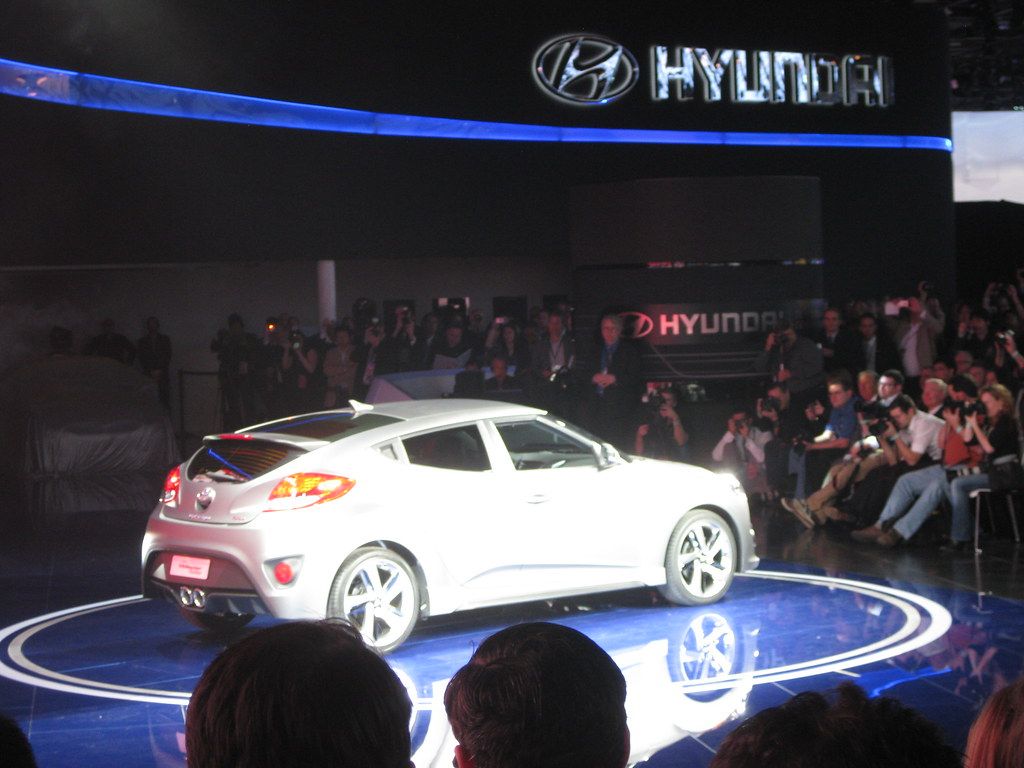
10. **Hyundai Veloster**Now, if there’s one thing the Hyundai Veloster got right, it was its looks. With its cool, distinctive styling and unique three-door configuration, it certainly stood out from the crowd. Plus, it offered responsive handling that could make driving genuinely fun, at least initially. On paper, it sounded like a quirky, engaging car for those who wanted something a bit different.
However, beneath that stylish exterior, the Veloster harbored problems that were simply too hard to ignore, turning that initial excitement into a gnawing sense of regret. Chief among these were significant engine issues, which could tragically lead to catastrophic failure. Imagine buying a car for its fun factor, only to live with the constant fear that its heart might just give out without warning—that’s a tough pill to swallow.
Adding to the mechanical headaches, the dual-clutch transmission in many Veloster models also became a source of widespread complaints. Owners reported a range of issues, including delayed acceleration, where the car hesitated before responding, slipping gears, and jerky shifts that made for an uncomfortable and unpredictable ride. These transmission quirks actively detracted from the responsive handling the car was otherwise praised for, creating a jarring contradiction in its performance.
And as if those weren’t enough to contend with, the Hyundai Veloster also earned a reputation for having persistent suspension and steering problems. These issues meant that even when the engine and transmission were cooperating, the car could feel less stable or precise than owners expected, further chipping away at the overall driving experience. For a car marketed on its dynamic appeal, these fundamental flaws proved to be major deal-breakers.
Car Model Information: 2012 Hyundai Veloster Base
Name: Hyundai Veloster
Manufacturer: Hyundai Motor Company
Production: 2011–2022
Class: Sport compact car
Layout: Front-engine, front-wheel-drive layout
BodyStyle: hatchback
Predecessor: Hyundai Tiburon
ModelYears: 2012–2022
Assembly: Ulsan
Categories: All Wikipedia articles in need of updating, All articles with unsourced statements, Articles containing Korean-language text, Articles with short description, Articles with unsourced statements from May 2018
Summary: The Hyundai Veloster (Korean: 현대 벨로스터, romanized: Hyeondae Belloseuteo) is a compact car first produced in 2011 by Hyundai, with sales beginning in South Korea on March 10, 2011, and in Canada and the United States since the fall of 2011. In South Korea, it was marketed under Hyundai’s ‘Premium Youth Lab’. It was unveiled on January 10, 2011, at the Detroit Auto Show, and fills the void left when Hyundai discontinued the Hyundai Tiburon after the 2008 model year.
The car differs from most other hatchbacks with its asymmetrical door configuration, featuring one large door on the driver side and two smaller doors on the passenger side. This configuration is more common on commercial vehicles and minivans.
Get more information about: Hyundai Veloster
Buying a high-performing used car >>>
Brand: Hyundai Model: Veloster
Price: $8,245 Mileage: 83,462 mi.
Read more about: Buyer’s Remorse Hits Hard: 15 Cars Drivers Regretted Purchasing According to Latest Survey Findings
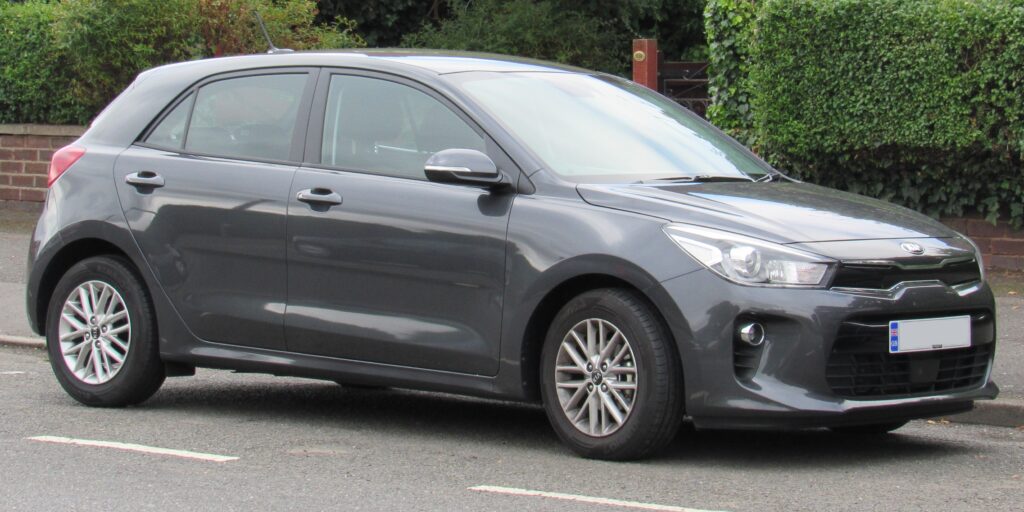
11. **Kia Rio**The Kia Rio, for a long time, has been recognized for its affordability and efficiency, making it an attractive option for first-time car buyers or those on a tight budget. It promises a no-frills, economical way to get around, and for a segment of the market, that’s exactly what they need. But as with many budget-friendly options, the reality of ownership can sometimes reveal that efficiency comes with its own set of compromises.
Unfortunately, alongside its reputation for being easy on the wallet, the Kia Rio has also become just as well known for its persistent engine issues. These problems often manifest as rough idling, where the car shakes or vibrates uncomfortably while stationary, and misfires, which indicate a problem with the engine’s combustion process. These issues usually stem from common culprits like faulty spark plugs or ignition coils, but they’re still a significant headache for owners.
Beyond the mechanical heart of the car, many owners also voiced complaints about the vehicle’s cheap interior quality. While you might not expect luxury from an affordable car, a constantly creaking dashboard or flimsy materials can quickly diminish the sense of value and comfort. These small details, when experienced daily, can compound into a larger feeling of dissatisfaction, making the car feel less like a smart purchase and more like a bare-bones compromise.
Coupled with these interior concerns are frequent complaints about comfort issues. This can range from uncomfortable seating on longer drives to a general lack of refinement in the cabin, making the overall experience less enjoyable. So, while the Kia Rio might get you from A to B affordably, the journey itself, and the peace of mind during it, often left owners wishing for something more substantial.
Car Model Information: 2023 Kia Rio S
Name: Kia Rio
Caption: Fourth generation Kia Rio
Manufacturer: Kia
Aka: Kia Pride (2005–2017),Kia K2 (China; 2011–2020)
Production: November 1999 – December 2023
ModelYears: 2001–2023 (North America)
BodyStyle: hatchback
Class: Subcompact car
Layout: Front-engine, front-wheel-drive layout
Predecessor: Kia Pride,Kia Avella
Successor: Kia K3 (BL7)
Categories: 2000s cars, 2010s cars, Articles containing Korean-language text, Articles with short description, CS1 Croatian-language sources (hr)
Summary: The Kia Rio (Korean: 기아 리오) is a subcompact car manufactured by Kia from 1999 to 2023. Body styles have included a three and five-door hatchback and four-door sedan, equipped with inline-four gasoline and diesel engines, and front-wheel drive.
The Rio replaced the first generation Pride—a rebadged version of the Ford Festiva—and the Avella, a subcompact sold as a Ford in some markets. A second generation was introduced in 2005 in Europe and in 2006 in North America, sharing its platform with the Hyundai Accent, a subcompact manufactured by its sister Hyundai Motor Company in South Korea.
In August 2023, the K3 was introduced as its successor in several markets such as Mexico and the GCC countries.
Get more information about: Kia Rio
Buying a high-performing used car >>>
Brand: Kia Model: Rio
Price: $18,491 Mileage: 22,509 mi.
Read more about: Beyond Ebert’s Top 5: A Deep Dive into 14 Legendary Films That Shaped Cinema History
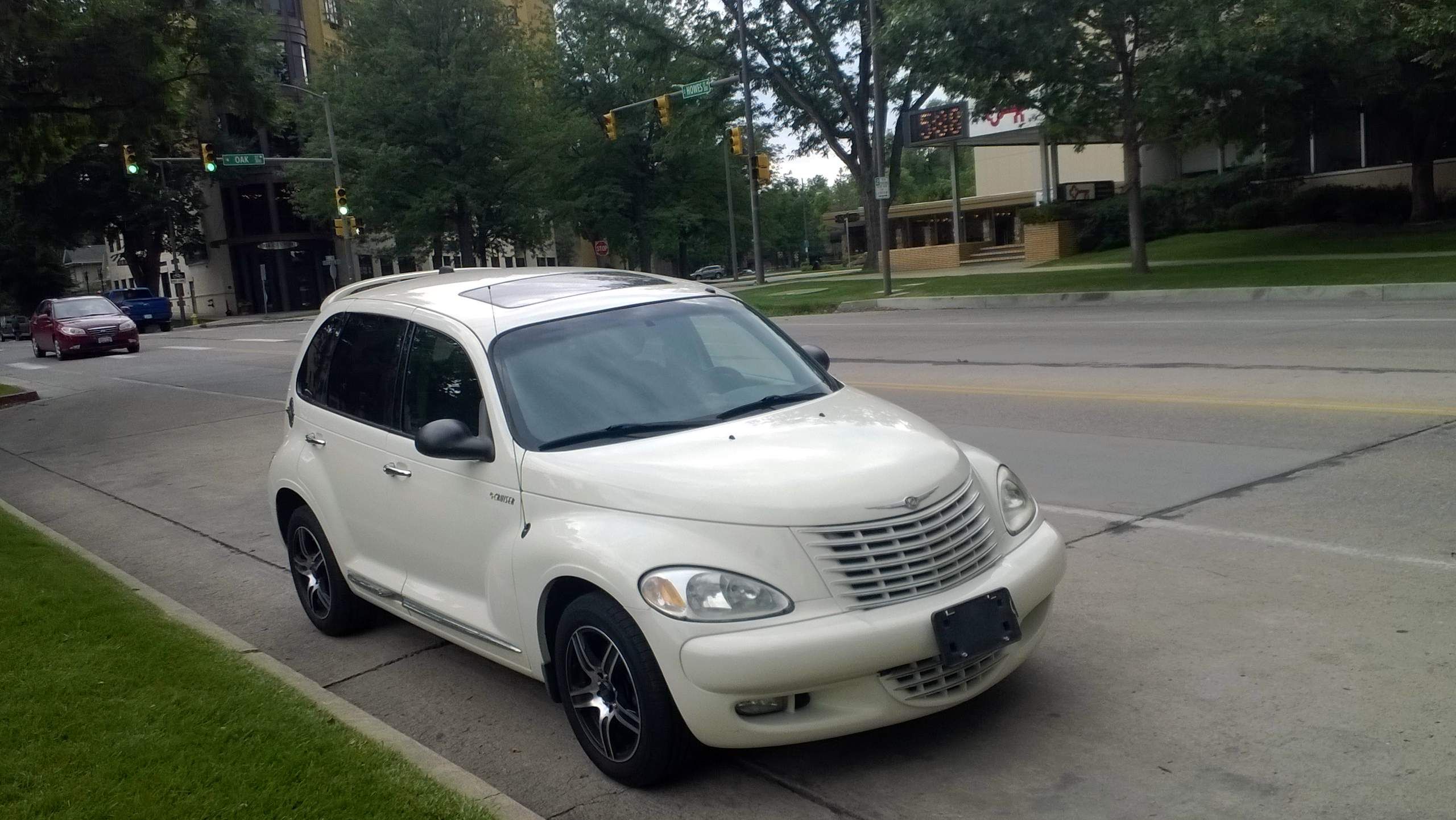
12. **Chrysler PT Cruiser**Oh, the Chrysler PT Cruiser. Where do we even begin with this one? Its retro styling was undeniably distinctive, sparking a debate that saw people either loving or, more often, loving to hate its unique look. It was a bold design statement, to be sure, but for many owners, the problems extended far beyond mere aesthetics, burrowing deep into the mechanical core of the vehicle.
This compact car had engine issues galore, presenting owners with a laundry list of problems that significantly impacted reliability and performance. Complaints ranged from frustrating stalling, which can be both inconvenient and dangerous, to rough idling that made the car feel constantly unsettled. These aren’t just minor quirks; they’re fundamental operational flaws that erode confidence in the vehicle.
Even more alarmingly, owners frequently reported issues with overheating, a serious problem that can quickly lead to more severe damage. The notorious head gasket failure was also a recurring nightmare, often resulting in incredibly costly repairs that far outweighed the car’s value. These engine troubles alone were enough to drive many owners to deep regret, making the PT Cruiser a source of constant anxiety.
Adding insult to injury, the PT Cruiser also suffered from persistent transmission and electrical problems, among other things. When multiple critical systems are prone to failure, a car quickly transforms from a mode of transportation into a money pit. The cumulative effect of these widespread issues left a significant number of owners regretting their buying decision and wishing they had steered clear of this retro-styled headache.
Car Model Information: 2024 Volkswagen Tiguan 2.0T Wolfsburg Edition
Name: Chrysler PT Cruiser
Manufacturer: Chrysler
ModelCode: PT,PG
Production: 2000–2010
ModelYears: 2001–2010
Assembly: Toluca
Designer: Bryan Nesbitt
Class: Compact car
BodyStyle: convertible
Platform: Chrysler PT platform
Related: Dodge Neon
Predecessor: Dodge Neon
Successor: Lancia Delta#Third generation
Layout: Front-engine, front-wheel-drive layout
Engine: ubl
Transmission: Ultradrive#40TE
Wheelbase: 103 in
Abbr: on
Length: 168.8 in
Width: 67.1 in
Height: 63 in
Weight: 3123 lb
Categories: 2010s cars, All articles with unsourced statements, Articles with short description, Articles with unsourced statements from March 2018, Cars discontinued in 2010
Summary: The Chrysler PT Cruiser is a compact car that was built by the American company Chrysler from 2001 until 2010. Introduced as a five-door hatchback wagon, a two-door convertible variant was also made from 2005 until 2008.
Originally planned as a Plymouth model, the PT Cruiser was ultimately marketed as a Chrysler when Plymouth was discontinued. Intended to invoke 1930s aesthetics, the exterior of the PT Cruiser was designed by Bryan Nesbitt. The model received an intermediate facelift for the 2006 model year. Interior packaging was noted for its high roof, high h-point seating, and flexible cargo and passenger configurations enabled by a multi-level rear cargo shelf and rear seats a user could fold, tumble, or remove.
The PT Cruiser was produced in Mexico and Austria at the Toluca Car Assembly and Eurostar Automobilwerk factories respectively. By the end of production in July 2010, worldwide production had reached 1.35 million.
In its nameplate, PT stands for “Personal Transport” or “Personal Transportation”. PT was the PT Cruiser’s product code for the Mexican-made units.
Get more information about: Chrysler PT Cruiser
Buying a high-performing used car >>>
Brand: Chrysler Model: PT Cruiser
Price: $28,928 Mileage: 18,114 mi.
Read more about: 12 Classic Boomer Cars Millennials Avoid: The Hidden Factors Behind Younger Generations’ Disinterest
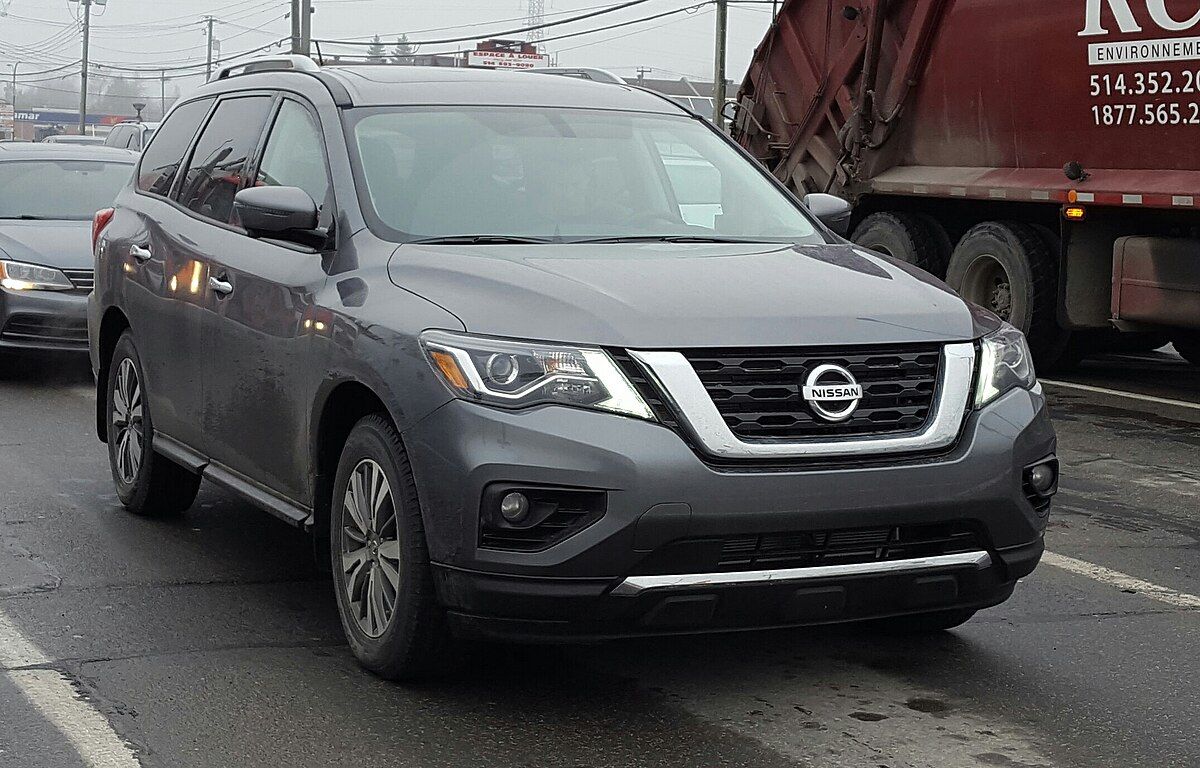
13. **Nissan Pathfinder**The Nissan Pathfinder has long been a popular SUV, appealing to families and adventurers alike who need space and capability. However, despite its popularity, certain generations of the Pathfinder have earned a reputation for having problems that leave owners with a significant case of buyer’s remorse. It’s a classic case of a promising vehicle failing to deliver on its core promise of reliability.
One particular issue that consistently rears its ugly head, much to the contention of owners, is that familiar friend (or foe, depending on your perspective) – the continuously variable transmission, or CVT. Owners of problematic Pathfinder models have experienced a range of frustrating symptoms, including rough shifting, a disconcerting shuddering, and even overheating, which can lead to catastrophic failure.
These CVT issues aren’t just minor annoyances; they frequently culminate in the need for an entire transmission replacement, a repair that can be incredibly costly and time-consuming. Imagine investing in an SUV for its reliability, only to face the prospect of such a major mechanical overhaul within a few years of ownership. It’s enough to make anyone question their decision.
Beyond the prevalent CVT problems, the Nissan Pathfinder has also been associated with other significant reliability concerns. Engine issues and fuel system problems are other things that frequently frustrate owners, adding to the growing list of reasons why many wished they had chosen a different path. For a vehicle designed for adventures, constant trips to the mechanic are the last thing anyone wants.
Car Model Information: 2023 Nissan Pathfinder SL
Name: Nissan Pathfinder
Caption: 2022 Nissan Pathfinder Platinum 4WD (R53, US)
Manufacturer: Nissan
Production: 1985–present
ModelYears: unbulleted list
Layout: unbulleted list
Class: unbulleted list
Chassis: unbulleted list
Predecessor: unbulleted list
Successor: unbulleted list
Categories: 1990s cars, 2000s cars, 2010s cars, 2020s cars, All-wheel-drive vehicles
Summary: The Nissan Pathfinder is a range of sport utility vehicles manufactured by Nissan since 1985. Until the third-generation model, the Pathfinder is based on Nissan’s compact pickup truck platform which it shares with the Navara/Frontier.
The Pathfinder was marketed as the Nissan Terrano (Japanese: 日産・テラノ, Hepburn: Nissan Terano) outside North America. Beginning in 2004, the vehicles were marketed globally as the Pathfinder.
In 2012, the R52 series Pathfinder was released as a three-row crossover SUV based on the unibody Nissan D platform, moving away from the body-on-frame chassis format. The role of a mid-size body-on-frame SUV in Nissan’s global lineup was passed to the Terra/X-Terra, which was released in 2018 and based on the D23 series Navara.
Get more information about: Nissan Pathfinder
Buying a high-performing used car >>>
Brand: Nissan Model: Pathfinder
Price: $32,775 Mileage: 18,055 mi.
Read more about: Beware These Cars: 10 Models with the Highest Depreciation Rates You Need to Know About
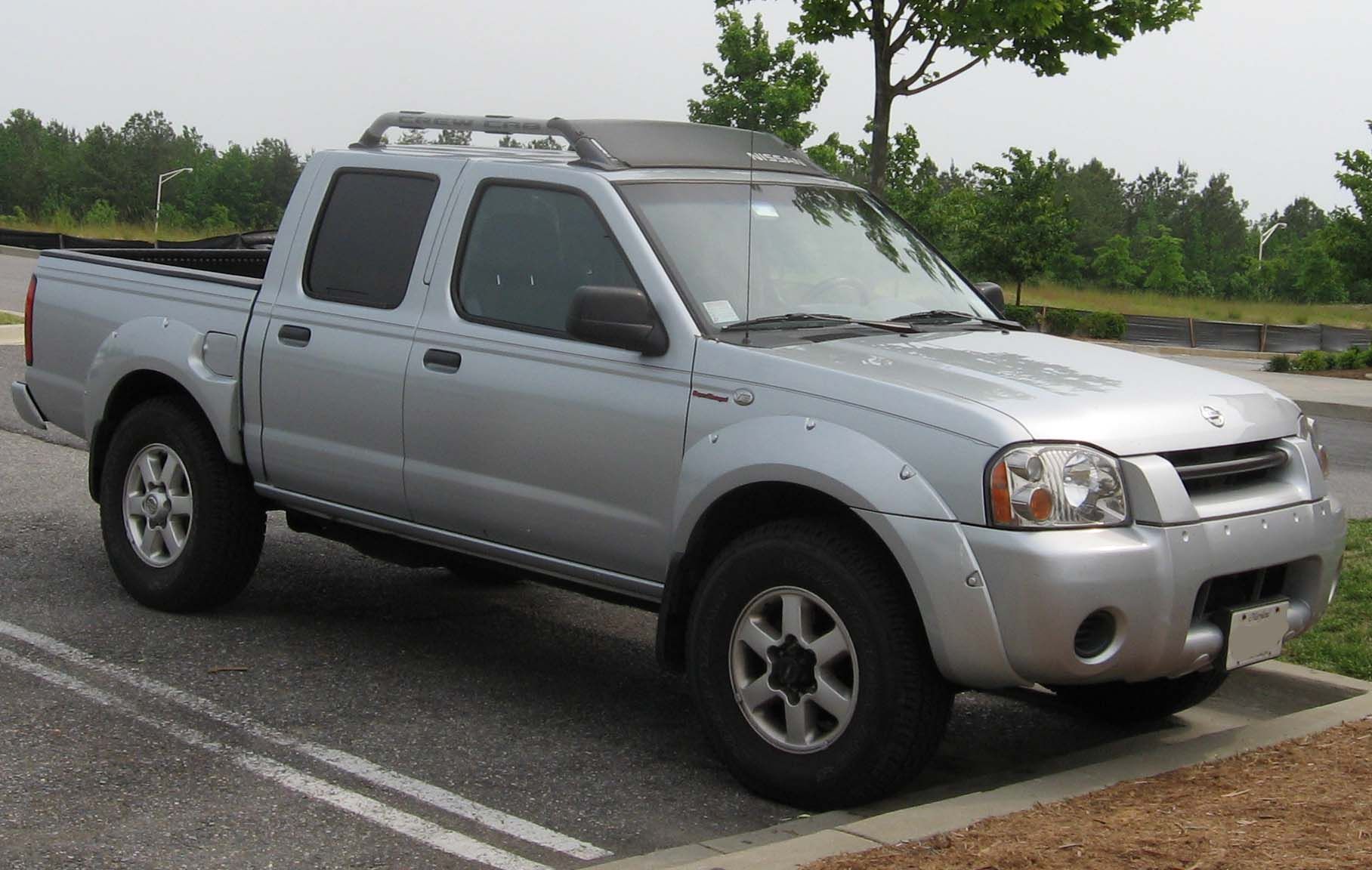
14. **Nissan Frontier**For those in the market for a mid-size pickup truck, the Nissan Frontier often enters the conversation as a seemingly robust option. However, for many owners, this truck has delivered plenty of problems that leave them shaking their heads and, perhaps, pounding the dashboard with their fists in frustration. Certain model years, in particular, stand out as significant sources of owner regret.
Specifically, the 2005 to 2010 model years are notorious for a deeply concerning transmission issue. The root cause of this widespread problem was a design flaw where the radiator would leak coolant directly into the transmissions. This contamination creates a toxic mix that rapidly degrades the transmission’s components, leading to a host of debilitating symptoms.
The result of this insidious coolant leak was a series of severe transmission malfunctions, including slipping gears, which compromise power delivery, and herky-jerky shifting that makes for an uncomfortable and unpredictable driving experience. In far too many cases, this radiator-induced contamination ultimately led to complete transmission failure, necessitating extremely expensive repairs or even a full replacement.
Beyond these critical transmission woes, the Nissan Frontier has also been plagued by other significant mechanical issues, including various engine problems and timing chain issues. These additional reliability concerns only serve to compound the frustration felt by owners, transforming what should be a dependable workhorse into a financial liability and a constant source of automotive anxiety.
Car Model Information: 2014 Nissan Frontier S
Categories: All set index articles, Articles with short description, Nissan vehicles, Set index articles on cars, Short description is different from Wikidata
Summary: The Nissan Frontier is a nameplate used on three different pickup truck models by Nissan:
Nissan Frontier (international), an alternative nameplate for the NP300/Navara on some markets
Nissan Frontier (North America), a rebadged NP300/Navara from 1997 to 2021, then became a separate model since 2021
Nissan Frontier Pro, a rebadged Dongfeng Z9 PHEV that will be available from 2025.
Get more information about: Nissan Frontier
Buying a high-performing used car >>>
Brand: Nissan Model: Frontier
Price: $13,435 Mileage: 131,197 mi.
Read more about: From Cool to Cringe: 15 Iconic Cars That Have Sadly Lost Their Shine and Now Make Us Wince
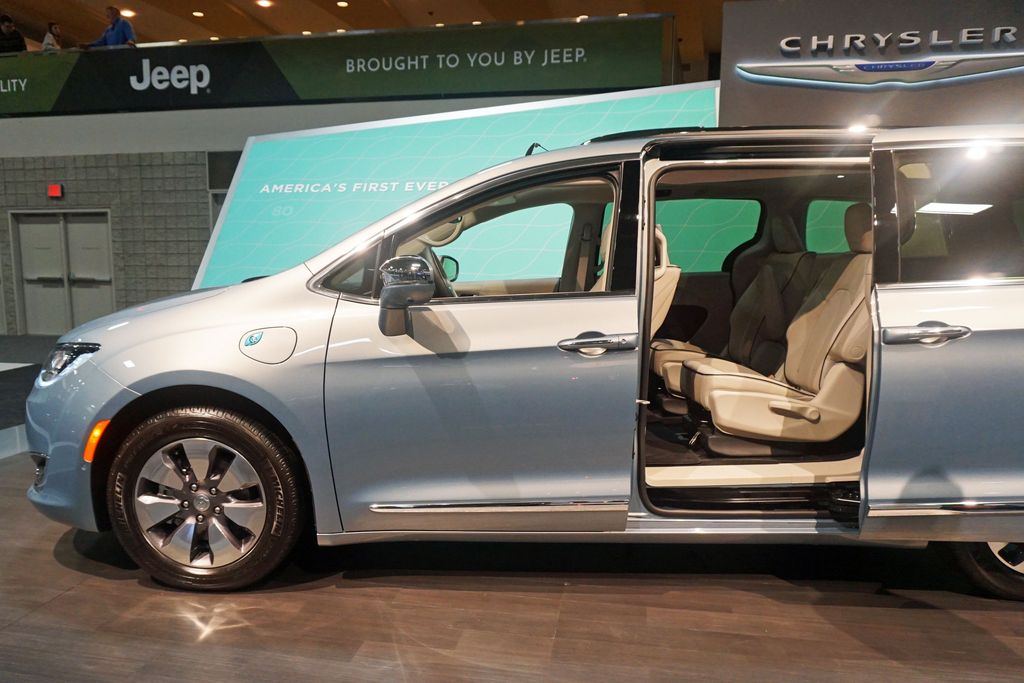
15. **Chrysler Pacifica Hybrid**The Chrysler Pacifica Hybrid rolled onto the scene as a popular minivan choice, especially appealing to those looking for a blend of family utility and improved fuel efficiency thanks to its plug-in hybrid powertrain. On the surface, it sounded like a perfect modern solution for busy families. But, as many owners have unfortunately discovered, sometimes even innovative technology comes with its own unique set of headaches.
The question quickly became: is the promise of fuel efficiency enough to offset the persistent battery and electrical problems that have plagued this vehicle? According to many owners, the resounding answer has been a clear “No.” These issues have manifested in frustrating ways, including significant battery drain, an inconsistent all-electric range that undermines its hybrid promise, and, in some cases, outright battery failure.
Imagine relying on your minivan’s electric capabilities for daily errands, only to find the battery constantly draining or the expected range wildly unreliable. This not only defeats the purpose of buying a hybrid but also introduces a layer of unpredictable inconvenience into daily life. For a vehicle meant to simplify family logistics, these power system quirks do anything but.
Further compounding the problems, owners have also reported issues with the electric continuous variable transmission. While different from traditional CVTs, it still presented its own share of performance hiccups and reliability concerns, adding to the long list of mechanical frustrations. The ongoing challenges with its complex powertrain have firmly placed the Chrysler Pacifica Hybrid on the list of vehicles that many owners wish they had reconsidered.
### Beyond the Dealership: Understanding, Dealing with, and Preventing Buyer’s Remorse
Alright, so we’ve navigated the treacherous waters of regrettable car purchases. But what about that nagging feeling, that knot in your stomach, that tells you something just isn’t right after you’ve bought a car? That, my friends, is buyer’s remorse, and it’s far more common than you might think. We’re talking about a significant financial decision here, so it’s totally normal for doubts to creep in.
**Why That Gut Feeling Hits: Understanding Buyer’s Remorse**
Buyer’s remorse isn’t just a fleeting thought; it’s a genuine psychological reaction that often follows a big purchase, especially when you’ve shelled out a significant chunk of change for a car. Picture this: you drive off the lot, and suddenly, all those ‘what ifs’ start swirling. Maybe you’re realizing the cost is higher than you expected, creating unexpected financial stress. Or perhaps you spotted a “better deal” online *after* you bought your car, leaving you feeling rushed and foolish.
Sometimes, it’s the well-meaning but ill-timed questions from friends or family that make you second-guess your decision, chipping away at your confidence. And let’s not forget the classic expectation vs. reality gap—the car didn’t quite live up to those dazzling commercials, leading to a dose of disappointment. These are all common triggers, and understanding them is the first step toward reclaiming your peace of mind.
Research backs this up big time. A Lending Tree study, which surveyed 1,919 car buyers, found that nearly four in 10 Americans (39%) regret their car purchase. Another report from Autotrader paints an even starker picture, revealing a whopping 69% of car buyers experience remorse. It’s a real issue, and it doesn’t discriminate. Interestingly, the study also noted that buyer’s remorse tends to decrease with age and the length of ownership, with 80% of Baby Boomers having no regrets compared to 40% of Gen Zers. It’s also a bit of a twist, but sometimes higher earners struggle more with payments, possibly due to stretching for pricier vehicles.
**When Regret Kicks In: What You Can Do Immediately**
So, the remorse has hit. What now? First off, acknowledge those feelings! It’s normal, and accepting it helps you move forward with a clearer head. Sometimes, just giving it a little time can help; the initial regret often fades as the novelty of the purchase settles. Next, try to identify the root cause of your regret. Is it the payments, the features, or simply a nagging feeling you could’ve done better? Pinpointing the cause helps you address it directly.
Don’t be shy about reviewing your purchase terms. Some dealerships, bless their hearts, offer return or exchange options within a specific, usually very short, timeframe. It’s a long shot, but it’s worth checking your contract for any clauses that might offer you an escape route. If you’ve just made the purchase and regret it, contacting the dealership ASAP is crucial. Be honest and direct about your concerns. They might be able to void the paperwork or switch you to another car, especially if you act quickly.
**Navigating Your Options: Practical Steps If You’re Stuck**
If the dealership isn’t able to offer a return or exchange, you still have options. One common path is to sell or trade in the vehicle. Yes, there might be some extra costs involved, especially if you’re underwater on your loan (owing more than the car is worth), but it can be a way to cut your losses and move into a car you genuinely prefer. If high monthly payments are the main culprit, consider refinancing the loan. A lower interest rate could significantly reduce your monthly burden, making the car feel much more manageable.
Before making any drastic moves, take a step back and think rationally. Ask yourself: Is the car safe and reliable? If it functions properly and meets your basic needs, your concerns might just be temporary. Can you truly afford the payments? Revisit your budget. If you’re stretching too thin, refinancing or adjusting other expenses might be necessary. Getting a handle on your finances is key to feeling confident about your purchase.
**Taking Control: Strategies to Reassure Yourself (or Prevent Future Regrets)**
If you decide to keep the car, and sometimes that’s the most sensible financial decision, there are ways to ease your concerns. Focus on the positives: remind yourself of the features, benefits, and reasons that initially drew you to this car. Personalizing your car with accessories or custom touches can make it feel more like *yours* and increase satisfaction. And remember to think long-term; you might grow to love your purchase as you get used to it.
To prevent buyer’s remorse from ever hitting again, the golden rule is thorough research. Compare prices, models, and financing options extensively before committing. Don’t just kick the tires; take a long test drive to ensure the car truly meets your needs and feels comfortable. Plan your budget meticulously and stick to it—seriously, no impulse buys here! Understand that all cars depreciate, it’s a normal part of ownership, so factor that into your financial outlook.
For those unsure about a long-term commitment, especially with a big leap like an EV, consider short-term leasing or car subscriptions. These options allow you to try a vehicle for a few weeks or months, giving you a real-world feel without the multi-year lock-in. It’s a fantastic way to test the waters and see if a car truly fits your lifestyle before making that huge financial plunge. Ultimately, an informed decision is your best defense against buyer’s remorse.
Car Model Information: 2021 Chrysler Pacifica Touring L
Categories: All set index articles, Articles with short description, Chrysler vehicles, Set index articles on cars, Short description is different from Wikidata
Summary: Chrysler Pacifica is a nameplate used by Chrysler for a variety of vehicles.
The name was first used on a luxury minivan concept vehicle in 1999, and later a crossover concept in 2002.
From 2004 to 2008, it was used on a mid-size crossover, and since the 2017 model year, it has been used as the Town & Country minivan’s replacement.
Vehicles using the nameplate are:
Chrysler Pacifica concept (1999), concept minivan
Chrysler Pacifica concept (2002), concept crossover
Chrysler Pacifica (crossover) (2004–2008), production version of the 2002 concept
Chrysler Pacifica (minivan) (2017–present), Chrysler Town & Country replacement
Get more information about: Chrysler Pacifica
Buying a high-performing used car >>>
Brand: Chrysler Model: Pacifica
Price: $26,462 Mileage: 29,396 mi.
Read more about: Buyer Beware: 15 Popular Cars That Seriously Disappointed Owners, According to Driver Regrets and Reliability Data
Sometimes life is about learning from other people’s mistakes so you don’t have to repeat them. That’s certainly the case with car ownership. The 15 vehicles we’ve highlighted are worth skipping unless you want to roll the dice and hope your experience is the opposite of many current owners. But armed with knowledge about these problematic vehicles and strategies to understand, deal with, and prevent buyer’s remorse, you’re now better equipped to make a car purchase that leaves you feeling elated, not deflated. Happy (and smart) car hunting!


